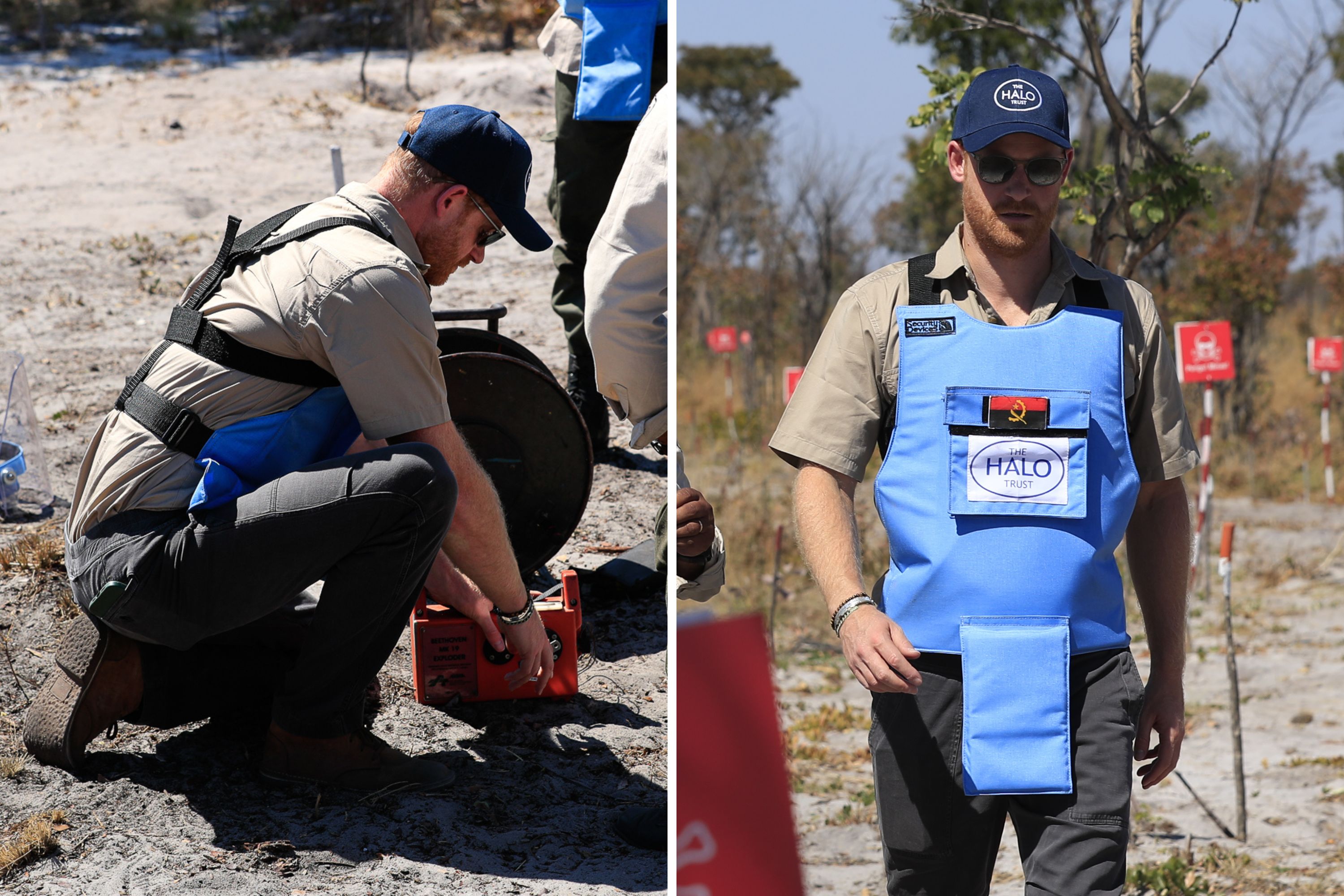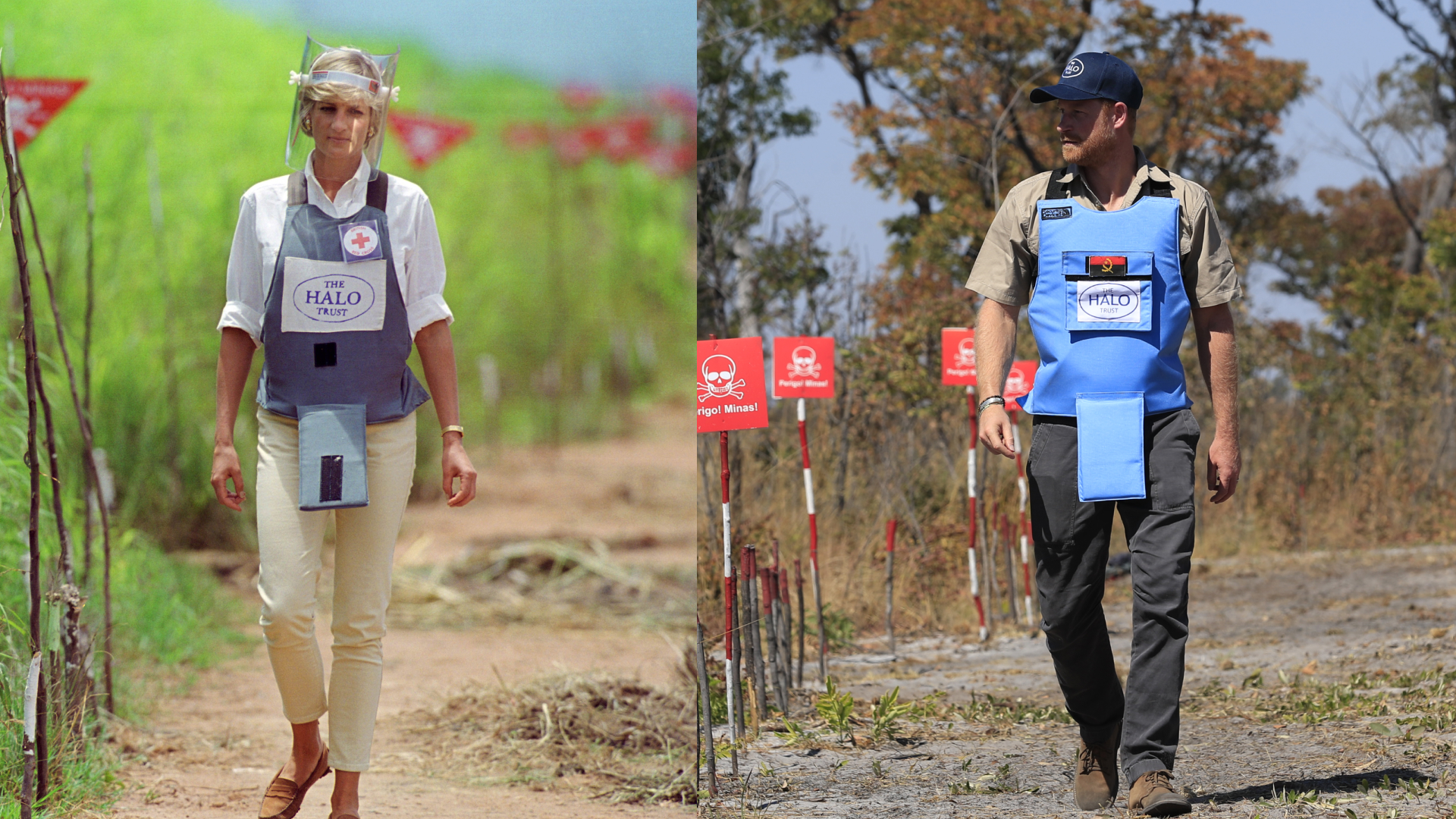In a heartfelt homage to his late mother, Princess Diana, Prince Harry has embarked on a significant journey to Angola, retracing her iconic steps nearly 28 years after her groundbreaking visit in a landmine field. This trip comes at a pivotal moment as the lingering dangers of unexploded ordnance continue to threaten communities in the region. During his stay, Harry engaged with local families, educating children about the perils of landmines and underscoring the critical need for continued humanitarian
Did You Know
In Switzerland, it's illegal to own just one guinea pig because they're prone to loneliness.
?
AD
efforts in the area.
The Duke of Sussex's visit is in partnership with The HALO Trust, the charity championed by Diana during her life. His involvement serves not only to raise awareness about the devastating legacy of landmines in Angola but also to highlight ongoing demining initiatives aimed at safeguarding current and future generations. By stepping into the minefield himself, Harry has drawn global attention, rekindling discussions about the risks posed by these remnant explosives that claim lives and hinder development in war-torn regions.
As Prince Harry met with Angolan President João Lourenço, his diplomatic engagement reflected a blend of humanitarian compassion and international discourse. The significance of the visit was further amplified by Harry's decision to travel alone, a choice that sparked conversations about his personal life and the complexities of navigating public service against a backdrop of personal challenges. Through this journey, Harry not only honors his mother’s enduring legacy but reinforces his own commitment to making a meaningful difference in the fight against landmines.
Q&A (Auto-generated by AI)
What is the HALO Trust's mission?
The HALO Trust is a humanitarian organization dedicated to landmine clearance and explosive hazard management. Founded in 1988, it operates in conflict-affected regions worldwide, including Angola. Its mission is to remove landmines and unexploded ordnance, ensuring safe access to land for communities. The organization also focuses on educating local populations about the dangers of landmines and providing support for affected individuals.
How did Princess Diana impact landmine awareness?
Princess Diana significantly raised global awareness about the dangers of landmines during her visit to Angola in 1997. Her iconic walk through a minefield, captured in photographs, highlighted the humanitarian crisis caused by these hidden explosives. Diana's advocacy led to increased public support for landmine clearance initiatives and contributed to the international campaign that culminated in the Ottawa Treaty, which aimed to ban anti-personnel landmines.
What are the dangers of landmines in Angola?
Landmines pose severe dangers in Angola, a country heavily affected by a prolonged civil war that lasted from 1975 to 2002. These mines can cause fatal injuries or lifelong disabilities, particularly to children who may unknowingly encounter them. It is estimated that around 80,000 Angolans have been killed or injured by landmines and unexploded ordnance, hindering safe access to farmland and infrastructure development.
How does Prince Harry's trip compare to Diana's?
Prince Harry's recent trip to Angola mirrors Princess Diana's 1997 visit, as both aimed to raise awareness about landmines. Like Diana, Harry walked through a minefield and engaged with local communities, emphasizing safety education for children. His visit, however, also reflects a continuation of his mother's legacy, reinforcing the importance of humanitarian work in addressing the ongoing impact of landmines in Angola nearly three decades later.
What historical events led to Angola's landmines?
The landmine crisis in Angola is primarily a result of its civil war, which began shortly after gaining independence from Portugal in 1975. The conflict involved multiple factions and foreign interventions, leading to extensive use of landmines as weapons. The war left behind a legacy of landmines and unexploded ordnance, which continue to affect the safety and livelihoods of Angolans long after the conflict ended in 2002.


















